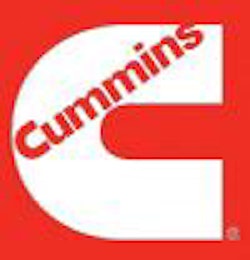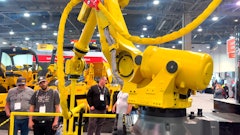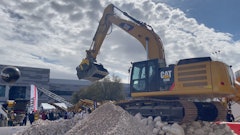

Cummins Inc. (NYSE: CMI) will take one of the most famous diesel-powered race cars of all time to the CONEXPO show (March 4-8, Las Vegas), with the Cummins Diesel Special 28 proudly displayed in the booth to highlight 95 years of innovation since the company was founded in February 1919. The number 28 created a sensation at the 1952 Indianapolis 500 by setting a four-lap record qualifying speed of 138 mph (222 kph) to take the coveted pole position on the grid at the legendary Indianapolis Motor Speedway. To achieve that distinction, the race car with a Cummins JB-600 diesel engine had outperformed some of the fastest gasoline-powered race cars in the world.
"The appearance of the Cummins Diesel Special race car at CONEXPO is a fitting testament to Cummins rich heritage of innovation in our 95th-anniversary year, brought right up to date with our latest near-zero emissions technology for Tier 4 Final, also featured in our booth," said Hugh Foden, Executive Director - Cummins Off-Highway Business.
The number 28 race car demonstrated the potential of the diesel engine to perform in a way that few outside of Cummins believed was possible at the time. With its radiant red-and-yellow color scheme, the Cummins Diesel Special 28 took to the track with a radically different Kurtis-Kraft roadster style chassis with a lower and longer profile. The six-cylinder Cummins JB-600 diesel was horizontally oriented as a "flat" engine within the highly streamlined body. The race car was built so low that the tires stood higher than the body.
For the race car, the JB-600 engine output was increased to 420 hp (313 kW) and made extensive use of lightweight materials, although it was essentially the same 6.6-liter engine that had recently entered service in trucks and would later appear in construction equipment.
The diesel engine came with two major advantages: first, performance was boosted by a turbocharger, used for the first time by a race car at the Indianapolis 500; and second, it featured the revolutionary pressure-time (PT) fuel system, which at that time was newly developed by Clessie Cummins and the engineering team at the Cummins headquarters in Columbus, Indiana, located just 50 miles from the Indianapolis Motor Speedway.
With the PT fuel system, the pump supplies the fuel at low pressure to a common rail and is then injected at high pressure by unit injectors to each cylinder. The PT system was not only much smaller and lighter, but it also enabled the engine to operate at a faster engine rpm. That major advantage set Cummins diesels apart from others for decades to come.
The driveshaft was offset to left side of the car to accommodate the engine and for a better center of gravity on the left-only turns at the speedway. The number 28 was the first Indy 500 race car to be tested in a wind tunnel, which helped to further enhance the sleek profile.
The result was a highly aerodynamic race car powered by a very strong, turbocharged diesel. Although experimental, and unknown before the race, the number 28 had achieved pole position at the world's foremost car race - to the astonishment of the industry.
Pole Position At The Indianapolis 500
With fearless driver Freddie Agabashian at the wheel, the Cummins Diesel Special 28 attracted national attention positioned at the front of the starting line. With the race underway, the heavier Diesel Special fell back from pole position as the turbocharger took its time to get the engine up to full power. Steadily, the diesel racer climbed back up the field to fourth position as the diesel engine strength and aerodynamic design took effect.
Unfortunately, at the 175-mile mark, the number 28 was forced to retire from the race due to damage resulting from the intake of tire debris on the track - ending hopes of victory for the many thousands of Columbus residents who attended the race to cheer on the race car.
After the race ended, the entry rules were changed, effectively making number 28 the last diesel race car to compete in the Indianapolis 500. However, the Diesel Special had by then achieved its purpose of showcasing the true potential of the diesel engine and had highlighted the ability of both Cummins innovative turbocharging and the new PT fuel system to transform diesel performance. The publicity achieved by the number 28 immediately boosted sales of Cummins diesels, with the recognition that it was the engine that had sat on the pole at the Indianapolis 500.
Visitors to CONEXPO can see the unique diesel race car in the Cummins booth, #84808, South Hall 4. Cummins experts will be on hand to provide an insight into the technology that made the Cummins Diesel Special 28 so famous.

















![Construction Angels T Shirt Sales Bomag[12]](https://img.forconstructionpros.com/files/base/acbm/fcp/image/2023/04/Construction_Angels_T_Shirt_Sales___BOMAG_12_.64380c1404381.png?auto=format%2Ccompress&fit=crop&h=135&q=70&rect=0%2C255%2C1920%2C1080&w=240)







